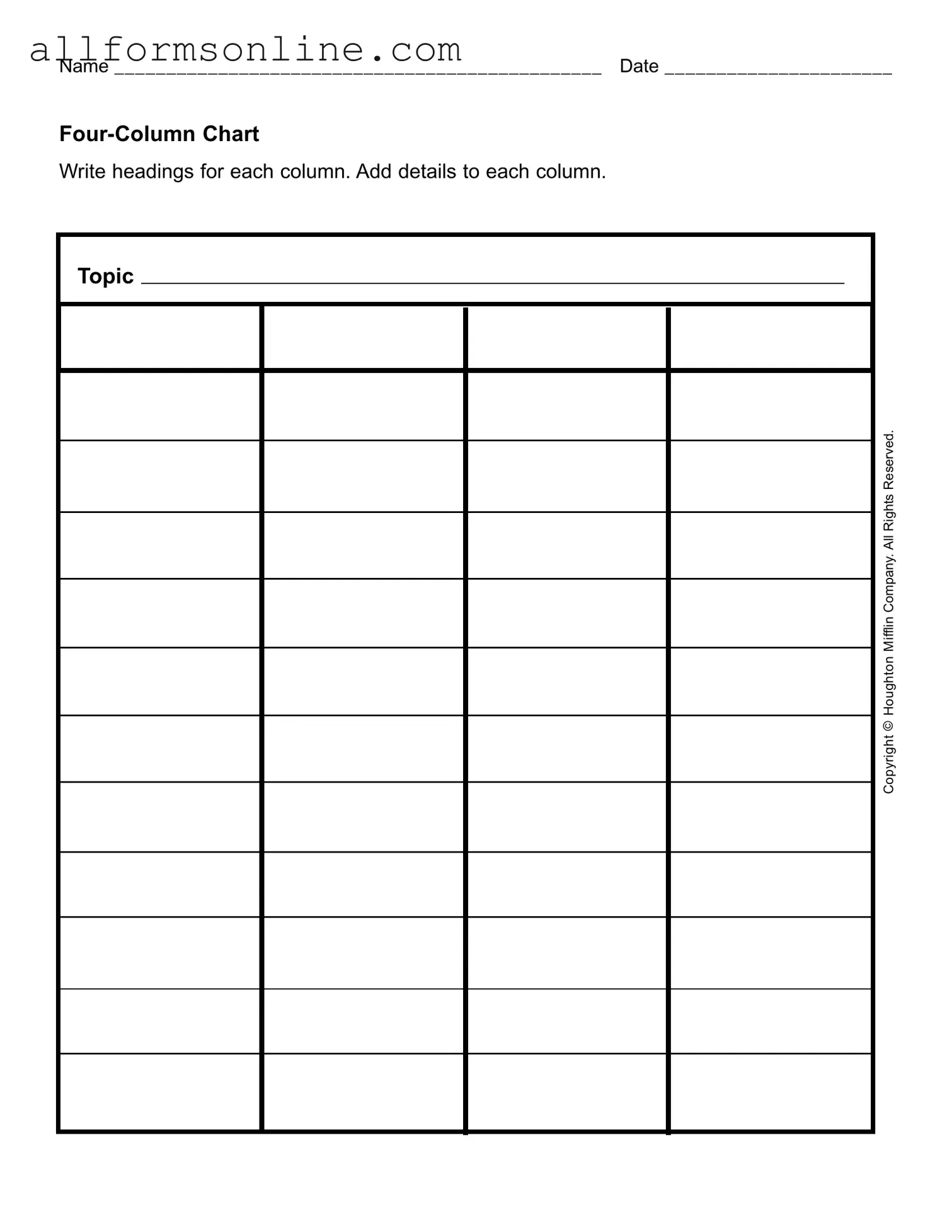What is the purpose of the Four Column Chart form?
The Four Column Chart form is designed to help organize information clearly and effectively. It allows users to categorize details under specific headings, making it easier to analyze and present data. This format is particularly useful for comparing different aspects of a topic or project.
How do I fill out the Four Column Chart form?
To fill out the form, start by writing the topic at the top. Then, create headings for each of the four columns. Each column should represent a different category or aspect of the topic. After you have your headings, add relevant details under each column. Ensure that the information is concise and directly related to the headings.
Can I use the Four Column Chart form for any topic?
Yes, the Four Column Chart form is versatile and can be used for a wide range of topics. Whether you are working on a project, preparing a report, or conducting research, this chart can help you organize your thoughts and findings effectively.
Is there a specific format I need to follow when creating headings?
There is no strict format for the headings. However, it is best to keep them clear and descriptive. This way, anyone reviewing the chart will quickly understand what each column represents. Aim for simplicity and clarity to enhance communication.
What if I need more than four columns?
If you find that you need more than four columns, consider whether the additional information can be grouped under existing headings. If not, you may create a separate chart or use a different format that allows for more columns. The goal is to maintain clarity and organization.
Can I share my completed Four Column Chart with others?
Absolutely! Once you have filled out the Four Column Chart, feel free to share it with colleagues, classmates, or anyone else who may benefit from the information. Sharing can promote collaboration and enhance understanding of the topic.
